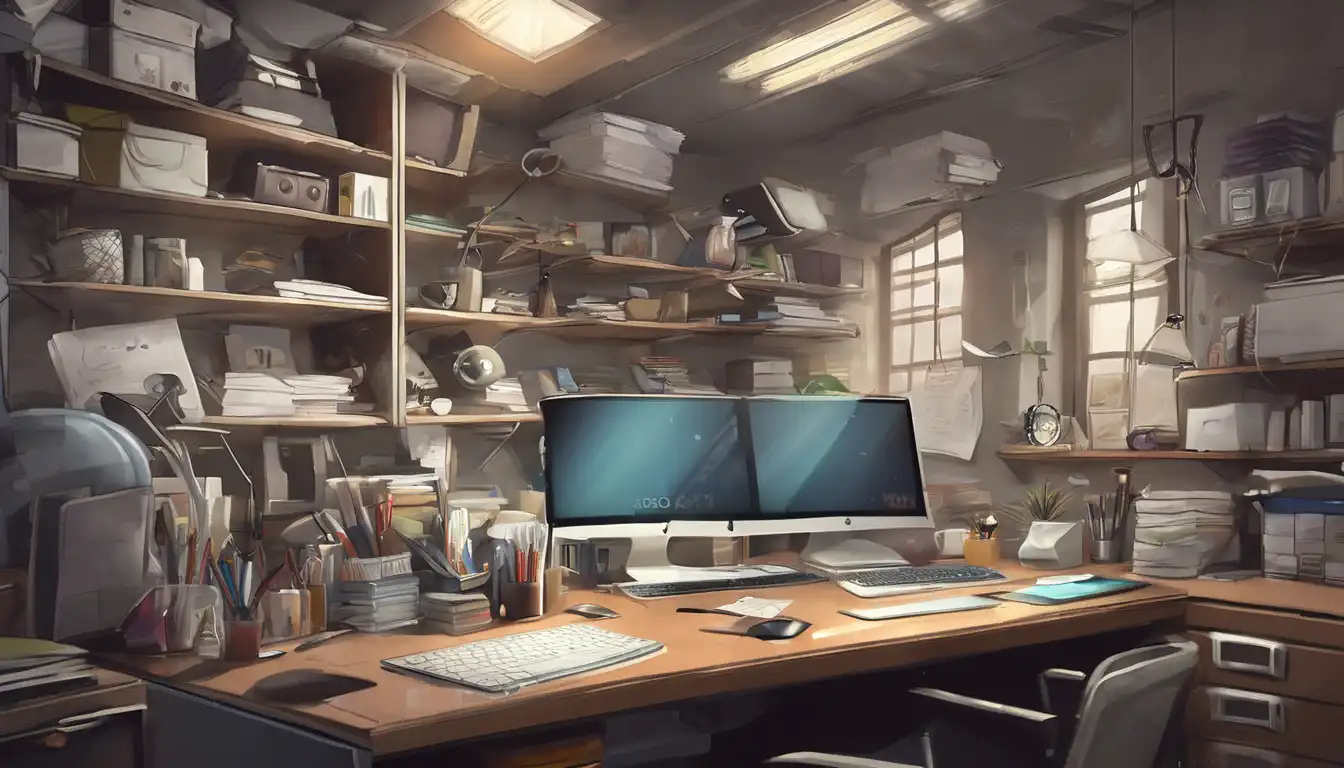Why Your Workspace Matters for Focus and Productivity
Your physical environment plays a crucial role in your ability to concentrate and maintain productivity throughout the workday. A cluttered, disorganized workspace can significantly impact your mental clarity, increase stress levels, and reduce overall efficiency. Research shows that employees with well-organized workspaces report up to 30% higher productivity levels compared to those working in chaotic environments.
The connection between organization and focus isn't just psychological—it's neurological. When your workspace is cluttered, your brain has to process unnecessary visual stimuli, which drains cognitive resources that could otherwise be directed toward your work tasks. By creating an intentional, organized environment, you're essentially freeing up mental bandwidth for what truly matters.
Decluttering: The Foundation of an Organized Workspace
Before you can organize effectively, you must first declutter. Start by removing everything from your desk and workspace surfaces. This might seem drastic, but it's the most effective way to assess what you truly need versus what's simply taking up space. As you sort through items, ask yourself these critical questions:
- Do I use this item daily or weekly?
- Does this item serve a specific purpose in my work?
- Could this be stored elsewhere if not frequently used?
- Is this item contributing to my work or just creating visual noise?
Create three piles: keep, donate/discard, and relocate. Be ruthless in your assessment—if you haven't used something in the past month, it likely doesn't belong on your primary work surface. For documents and papers, consider implementing a digital filing system to reduce physical clutter.
Essential Organizational Systems for Maximum Efficiency
Once you've decluttered, it's time to implement organizational systems that support your workflow. Different work styles require different approaches, but some universal principles apply to most professionals.
Desktop Organization Strategies
Your desk surface should contain only items you use multiple times daily. Consider implementing these organizational tools:
- Desk organizers for pens, notebooks, and frequently used office supplies
- Cable management solutions to eliminate visual clutter from cords
- Designated zones for different types of work (computer work, writing, reading)
- A physical inbox/outbox system for paper documents
Digital Workspace Organization
Don't neglect your digital environment—a cluttered computer desktop or disorganized files can be just as distracting as physical clutter. Implement these digital organization strategies:
- Create a logical folder structure for documents and projects
- Use consistent naming conventions for files
- Regularly clean up your desktop and downloads folder
- Organize browser bookmarks into categorized folders
Ergonomics: Setting Up Your Workspace for Physical Comfort
An organized workspace isn't just about aesthetics—it's also about physical comfort and health. Proper ergonomics can significantly impact your ability to focus by reducing physical discomfort and fatigue. Consider these ergonomic principles when setting up your workspace:
Your chair should support your lower back and allow your feet to rest flat on the floor. Your computer monitor should be at eye level, approximately an arm's length away. Keyboard and mouse placement should allow your wrists to remain straight and your elbows close to your body. Proper lighting is equally important—position your light source to minimize glare on your screen while ensuring adequate illumination for reading and writing tasks.
Minimizing Distractions in Your Work Environment
Even the most organized workspace can be undermined by external distractions. Identify potential distractions in your environment and develop strategies to minimize their impact. If noise is an issue, consider noise-canceling headphones or background music designed for concentration. Visual distractions can be reduced by positioning your desk away from high-traffic areas or using room dividers.
Digital distractions require particular attention. Implement website blockers during focused work sessions, turn off non-essential notifications, and establish specific times for checking email and messages. Many professionals find that implementing the Pomodoro Technique—working in focused 25-minute intervals followed by short breaks—helps maintain concentration while providing built-in distraction management.
Personalizing Your Space for Motivation and Inspiration
While minimalism has its benefits, a completely sterile environment can feel uninspiring. The key is intentional personalization. Choose a few meaningful items that motivate you without creating visual clutter. This might include:
- A plant to improve air quality and add natural elements
- One or two personal photos in simple frames
- Artwork that inspires creativity or calm
- A vision board with your professional goals
Remember that personal items should enhance your workspace, not dominate it. Rotate decorative elements periodically to keep your environment feeling fresh without accumulating unnecessary items.
Maintaining Your Organized Workspace
Organization isn't a one-time project—it's an ongoing practice. Develop daily and weekly habits to maintain your optimized workspace. At the end of each workday, spend five minutes resetting your space: clear surfaces, file papers, and prepare for the next day. This simple habit can dramatically improve your morning productivity and mental clarity.
Schedule a monthly "deep clean" session to reassess your organizational systems and make adjustments as needed. As your work evolves, your organizational needs may change. Regular maintenance ensures your workspace continues to support your current workflow and priorities.
The Psychological Benefits of an Organized Workspace
Beyond the practical advantages, an organized workspace offers significant psychological benefits. The act of organizing can reduce anxiety and create a sense of control over your environment. A clean, intentional space signals to your brain that it's time to focus, creating a psychological trigger for productivity.
Many professionals report that maintaining an organized workspace improves their overall job satisfaction and reduces work-related stress. When your environment supports rather than hinders your efforts, you're more likely to approach tasks with confidence and clarity. This positive mindset can have ripple effects throughout your professional life, improving not just focus but creativity and problem-solving abilities as well.
Implementing these workspace organization strategies requires initial effort, but the long-term benefits for your focus, productivity, and well-being make it a worthwhile investment. Start with small changes and gradually build systems that work for your specific needs and work style. Your future focused self will thank you.
